When choosing a plant for your landscape, one of the factors you should consider is the rate of growth of the plants. Some people might prefer fast-growing plants while some prefer Slow-growing ones.
Slow-growing plants are one of the best plants you can choose for your landscape. They give you an assurance that you won’t have to change the plants frequently and they’ll thrive in diverse weather conditions.
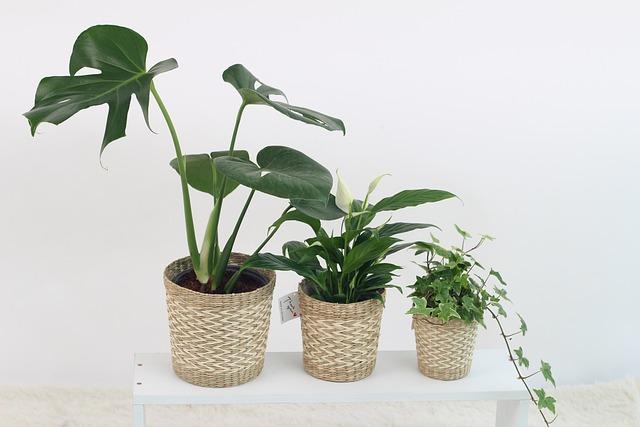
Hence, if you’re looking for slow-growing plants for landscaping, there are a few good options to choose from. You’ll find some of these plants in this blog post and other crucial information about Slow-growing plants.
The Benefits Of Slow-growing Plants For Landscaping
When it comes to landscaping, one of the most important things to consider is the growth rate of the plants you choose. Slow-growing plants have a number of benefits that make them ideal for many different types of landscaping projects.
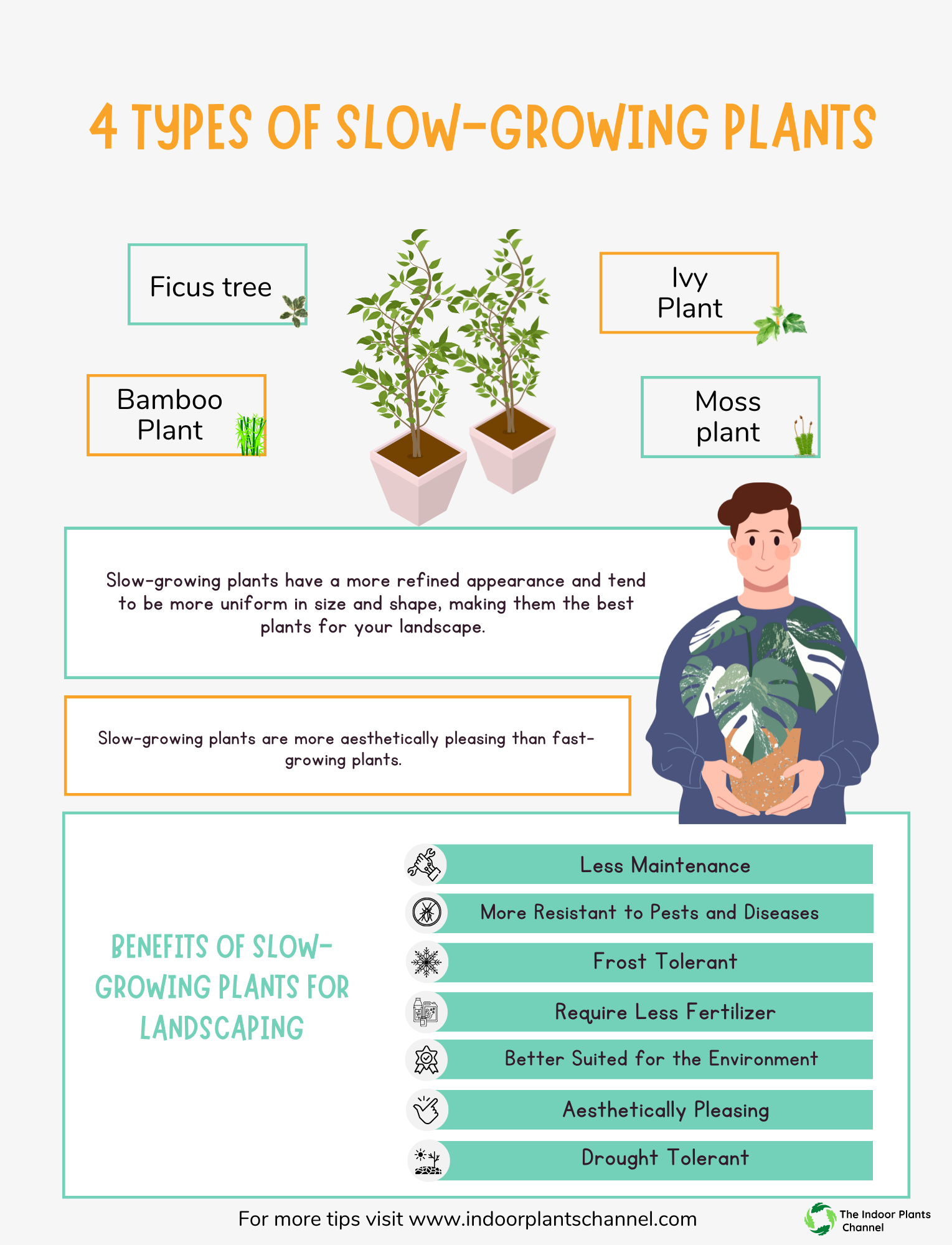
Here are just a few of the benefits of slow-growing plants:
1. They require less maintenance
Slow-growing plants require less maintenance than fast-growing plants. This is because they have a slower growth rate, so they don’t need to be pruned often. They save time and money in the long run.
2. Slow-growing plants are more resistant to pests and diseases
Slow-growing plants are more resistant to pests and diseases because of their thicker bark and stronger roots. This makes them less likely to be damaged by pests and diseases.
3. They’re more drought-tolerant
Slow-growing plants are more drought-tolerant than fast-growing plants. This is because they have a slower growth rate, so they don’t need as much water.
4. They’re frost tolerant
Slow-growing plants are also more frost-tolerant than fast-growing plants. This is due to their slower growth rate, so they’re less likely to be damaged by frost.
5. They require less fertilizer
Slow-growing plants also require less fertilizer than fast-growing plants since they don’t need plenty of food. This can save you money on your fertilizer bill.
6. They’re better suited for the environment
Slow-growing plants are better for the environment than fast-growing plants. They have a lower carbon footprint and need less water or fertilizer, which can save resources.
7. They’re more aesthetically pleasing
Slow-growing plants are also more aesthetically pleasing than fast-growing plants. They have a more refined appearance and tend to be more uniform in size and shape.
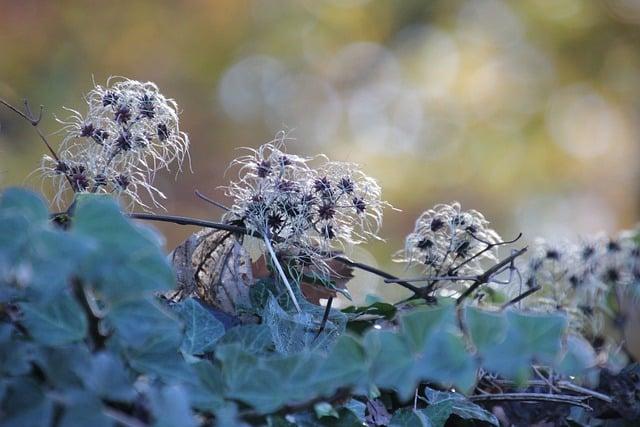
How To Choose The Right Slow-growing Plant For Your Landscape
1. Do your research
Before you go out and purchase a slow-growing plant for your landscape, it is important to do your research. Find out what type of plant will work best in your climate and in the specific area of your landscape that you want to plant it.
2. Consider the size of the plant
When choosing a slow-growing plant for your landscape, you will need to consider the size of the plant. Make sure to pick a plant that won’t grow big for the space you have.
3. Choose a plant that is drought-tolerant
One of the benefits of choosing a slow-growing plant is that they are often more drought-tolerant than fast-growing plants. This means they will require less water, which can save you money on your water bill.
4. Consider the maintenance required
Some slow-growing plants may require more maintenance than others. Make sure to choose a plant that you are willing to put the time and effort into maintaining.
5. Pick a plant that is native to your area
Native plants are often the best choice for landscapes because they are already adapted to the climate and conditions in your area. This means they will be easier to care for and are more likely to thrive.
6. Select a plant that is pest-resistant
Pest-resistant plants are a great choice for landscapes because they will require less pest control. It can also save you time and money.
7. Choose a plant that will provide year-round interest
One of the benefits of choosing a slow-growing plant is that they often provide year-round interest. That is, they will add beauty to your landscape even in the winter months.
Different Types of Slow-growing Plants
-
Ficus tree.
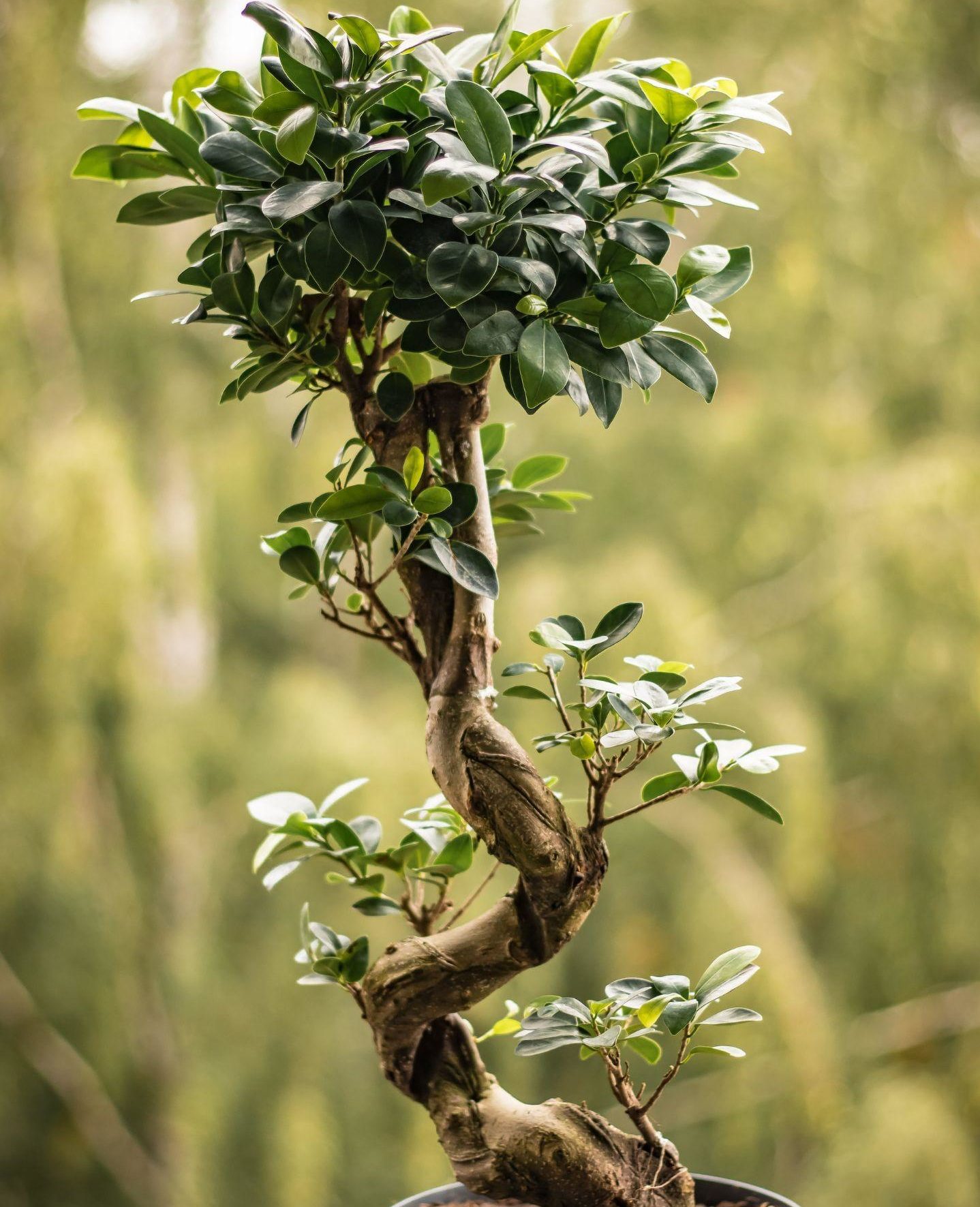
Credit: Unsplash
Ficus trees are popularly known for their slow growth rate, and they can make a great addition to any landscape.
-
The bamboo plant.
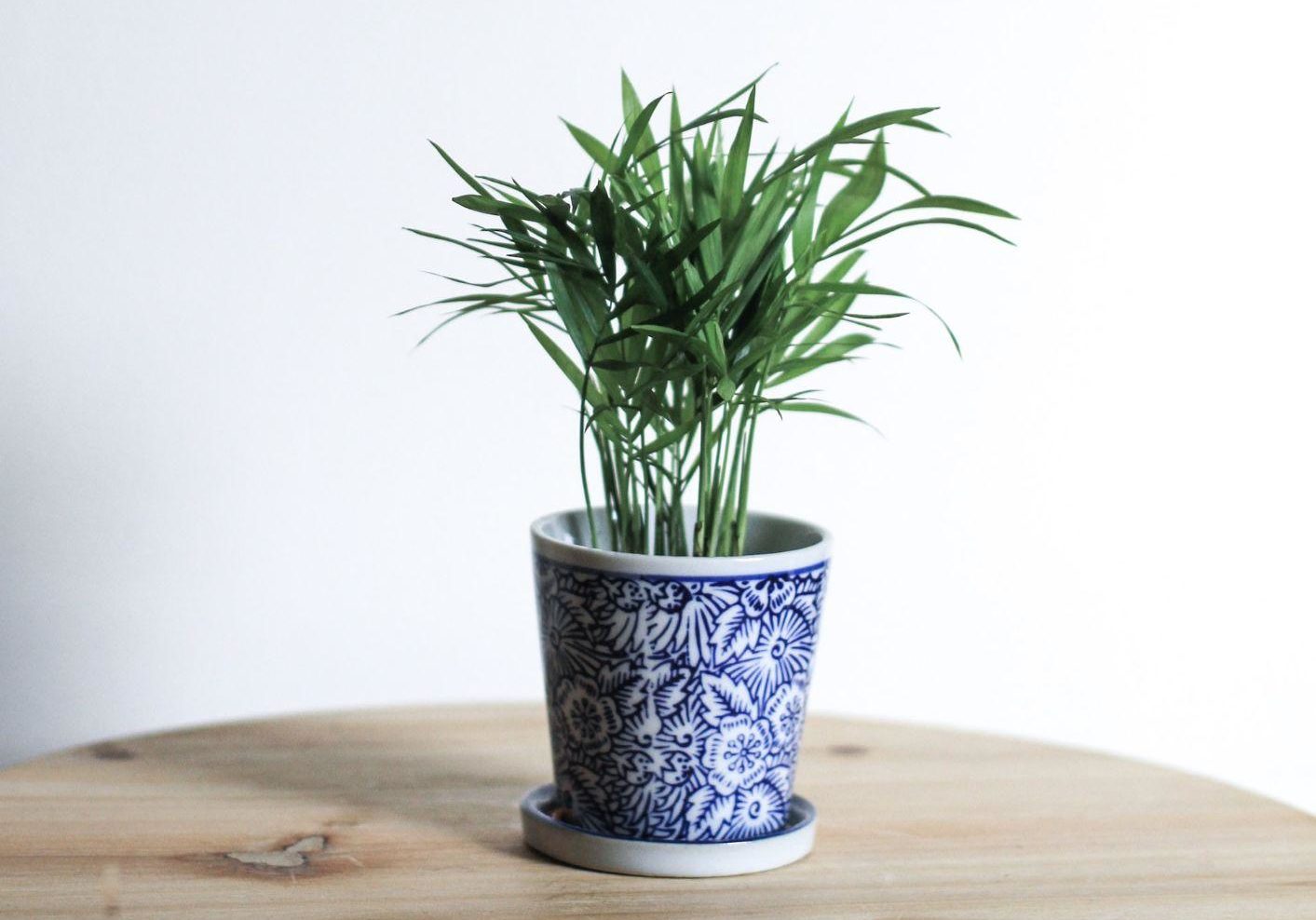
Credit: Unsplash
Bamboo is grass that grows very quickly, but it can be controlled by trimming it regularly. It can add a unique look to any landscape, and it’s a good choice if you’re looking for a plant that will fill an area quickly.
-
Ivy plant.
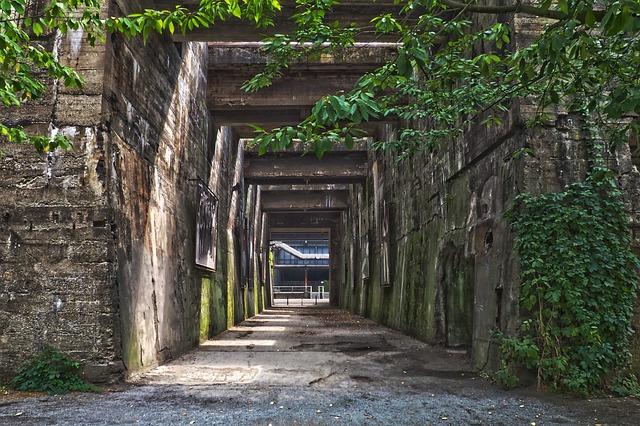
Ivy grows very slowly, but it can provide a nice ground cover for your landscape.
-
Moss plant.
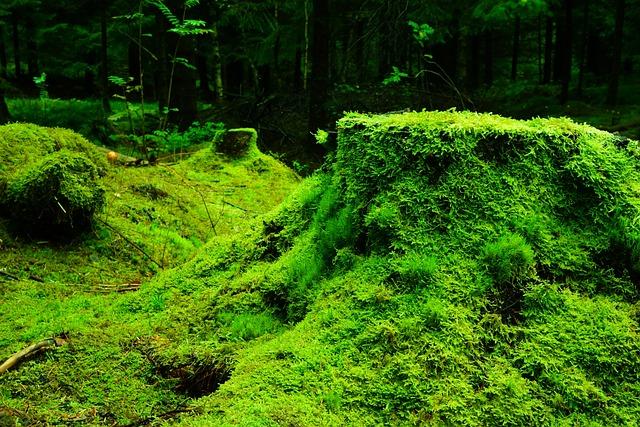
Moss grows very slowly, but it’s a good choice if you’re looking for a plant that will stay green all year long.
The Best Ways To Care For Slow-growing Plants In Your Landscape
1. Do your research
Before you go out and purchase a slow-growing plant, do your research on the specific plant you want. Consider the climate in your area, the amount of sunlight the plant will need, and the amount of water and fertilizer it will need. You can find this information online or at your local nursery.
2. Prepare the planting area
Once you have decided on the plant, you need to prepare the planting area. If you’re planting in the ground, make sure to loosen the soil and remove any weeds. If you are planting in a pot, make sure it is the right size for the plant and has drainage holes.
3. Plant the plant
Now it’s time to actually plant the plant! Gently remove it from the pot (if applicable), and place it in the prepared planting area. Make sure to firm the soil around the plant so that it is secure.
4. Water the plant
Water the plant immediately after planting. Deeply water it, so that the roots can be established. After that, water the plant as needed. Check the soil before watering to make sure it is dry.
5. Fertilize the plant
Fertilize the plant according to the manufacturer’s instructions. Slow-growing plants typically don’t need a lot of fertilizer, so don’t overdo it.
6. Prune the plant
Prune the plant as needed to keep it healthy and looking its best.
How To Use Slow-growing Plants To Create An Impact In Your Landscape
1. Start with a plan:
Before you head to the nursery, it’s important to have a plan for where you want to put your slow-growing plants. Decide what kinds of plants you want and where they will look best in your landscape. Draw a sketch of your yard or garden, and make note of sunny and shady areas.
2. Choose the right plants:
Not all slow-growing plants are alike. Some are best suited for shady areas, while others need full sun. Be sure to choose plants that will do well in the conditions you have in your yard.
3. Give them room to grow:
Slow-growing plants can take years to reach their full size. When you’re planting them, give them enough room to spread out. If you plant them too close together, they may crowd each other and not have enough room to reach their full potential.
4. Be patient:
Slow-growing plants will grow slowly. Don’t expect them to fill in your landscape overnight. Be patient and enjoy watching them grow over time.
5. Prune them regularly:
To keep your slow-growing plants looking their best, be sure to prune them regularly. This will help them to maintain their shape and size.
6. Fertilize them:
Slow-growing plants may need a little extra help to reach their full potential. Be sure to fertilize them regularly, using a fertilizer that is designed for slow-growing plants.
The Challenges Of Landscaping With Slow-growing Plants
- One of the challenges of landscaping with slow-growing plants is that they can take a long time to fill in an area. This can be frustrating if you are trying to create a certain look or feel in your landscape.
- Slow-growing plants can be more expensive than fast-growing plants. This is because they take longer to reach maturity and produce less new growth each year.
- Slow-growing plants can be more difficult to care for than fast-growing plants. This is because they are more sensitive to changes in their environment and require more attention to detail.
How To Overcome The Challenges Of Landscaping With Slow-growing Plants
When it comes to landscaping with slow-growing plants, there are a few challenges that you may face. But don’t worry, there are ways to overcome these challenges.
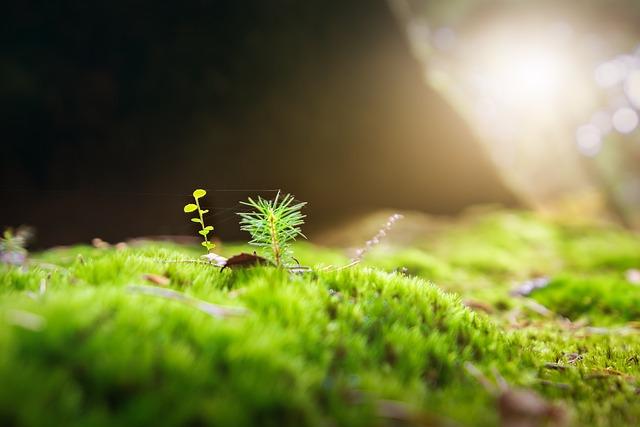
Here are a few tips:
1. Be patient.
One of the challenges of landscaping with slow-growing plants is that it can take a while for them to reach their full potential. So it’s important to be patient and not expect instant results.
2. Choose the right plants.
Not all slow-growing plants are created equal. Some are more difficult to care for than others. So it’s important to do your research and choose slow-growing plants that will be a good fit for your landscape.
3. Plan ahead.
Another challenge of landscaping with slow-growing plants is that they can take a while to reach their full size. Thus, it’s important to plan ahead and make sure you have enough space for them.
Bonus Tips
- Use slow-growing plants for landscaping as a border in your garden.
- Plant slow-growing plants for landscaping in pots and place them around your home.
- Use slow-growing plants for landscaping to create a natural privacy screen.
- Plant slow-growing plants for landscaping in your garden bed to add texture and interest.
Conclusion
Slow-growing plants are made for people who don’t have the capacity to take care of fast-growing plants. These plants(Slow-growing) have numerous benefits and there are some tips you can follow to take good care of them.
So, we’ve compiled the benefits of the plants, how to use them to achieve your desired landscape, and solutions to some issues you might face with them.
Michelle Wilde
Related posts
![]()
About Michelle Wilde
Michelle Wilde is a stay-at-home mom and avid plant lover. Armed with a post-graduate degree in Computer Science (no kidding!), she loves researching plants and landscapes. When she is not caring for her 4 kids, she spends time on her passion for plants. She blogs at www.indoorplantschannel.com, the trusted source for indoor plants.
Learn more
Subscribe
* You will receive the latest posts and updates about indoor plants!
Search
Recent Posts
Categories
- Beginner Guides (10)
- FAQ (206)
- General (2)
- How-To Guides (212)
- Indoor Plants (214)
- Pest Management (2)
- Plant Problem Solutions (4)
- Seasonal Growing (2)
- Specialized Environments (2)
- Specific Plant Care (3)
- Technical Growing (2)